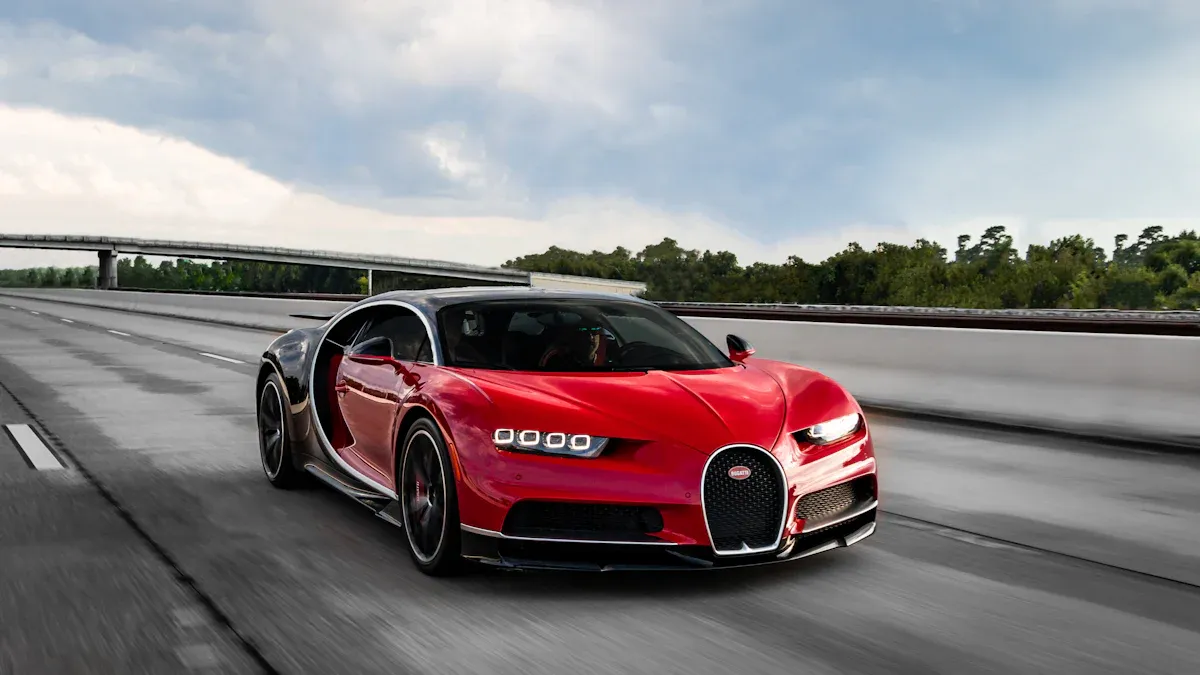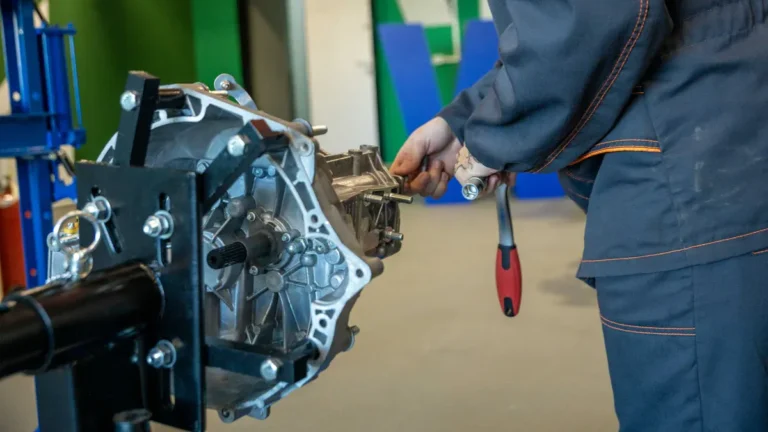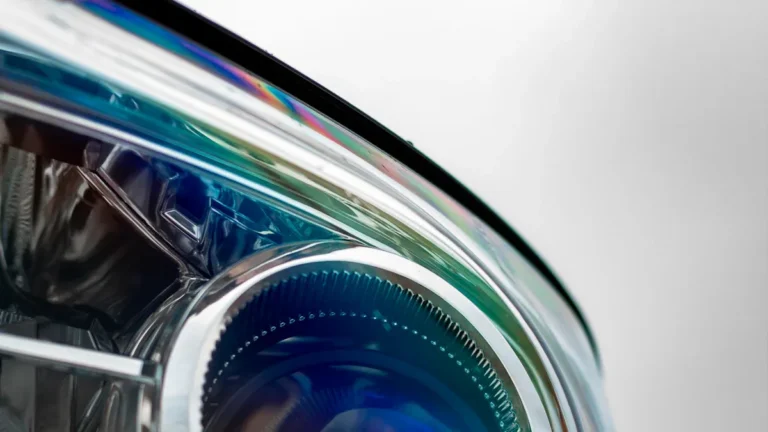
The Bugatti Chiron generally offers superior raw performance. The Bugatti Veyron was a groundbreaking icon. The Bugatti Chiron is its advanced successor. This article compares the Chiron vs Veyron across speed, technical specs, and cost. Both hyper sports cars represent Bugatti’s legacy of innovation. The Bugatti Veyron, priced around $1.7 million at launch, redefined hypercar performance. The Bugatti Chiron, with variants like the 30-unit Super Sport 300+, continues this tradition.
Key Takeaways
The Bugatti Chiron is faster and more powerful than the Veyron. It has more horsepower and quicker acceleration.
Both cars use a special W16 engine. The Chiron’s engine is an improved version with more power and better technology.
The Chiron costs more than the Veyron. This is because it has newer technology and better performance.
Both cars are very rare and expensive to own. They are special cars that many collectors want.
The Veyron was a groundbreaking car. The Chiron is its modern and more advanced successor.
Chiron vs Veyron: Quick Comparison

Key Performance Metrics
This table offers a quick look at the core performance metrics for the Bugatti Chiron and the Bugatti Veyron. It highlights their engine specs, speed, and acceleration capabilities.
Figure | Chiron | Veyron |
|---|---|---|
Horsepower | 1,479 hp | 987 hp (Veyron), 1,184 hp (Super Sport) |
Torque | 1,180 lb ft | 922 lb ft |
0-62 mph | Less than 2.5 seconds | 2.5 seconds |
Top Speed | 261 mph (limited) | 253 mph (Veyron), 268 mph (Super Sport, world record), 258 mph (Super Sport, production limited) |
The initial price for these hypercars also shows a difference. The Bugatti Chiron had an approximate Manufacturer’s Suggested Retail Price (MSRP) of $3,172,500. The Bugatti Veyron’s original price was around $1.7 million. This cost reflects the advanced engineering in each Bugatti model.
Initial Verdict
The Bugatti Chiron clearly surpasses the Bugatti Veyron in raw performance. This quick chiron vs veyron comparison shows the Chiron boasts significantly more power, with nearly 1,500 horsepower, and quicker acceleration.
The Chiron reaches 0 to 60 mph in under 2.5 seconds. While the Veyron set groundbreaking records for top speed, the Chiron’s overall performance and advanced engine design make it the more potent machine. The Bugatti Chiron offers a higher level of power and speed, making it a formidable successor. Its 1500 horsepower engine represents a significant leap in automotive engineering.
Speed and Acceleration: Bugatti Chiron vs. Veyron

Top Speed Records
Both the Bugatti Veyron and Bugatti Chiron push the boundaries of what a road car can achieve in terms of speed. The original Bugatti Veyron EB 16.4 set a remarkable benchmark. It reached a top speed of 253.81 mph (408.47 km/h). German inspection officials recorded and verified this speed on April 19, 2005. This achievement cemented the Veyron’s place in automotive history.
Bugatti later introduced the Veyron 16.4 Super Sport. This variant aimed to reclaim the title of the fastest road car. The Veyron Super Sport achieved a new land speed world record for production cars. It reached an average top speed of 268 mph (431.072 km/h) at Volkswagen Group’s Ehra-Lessien proving grounds. The German Technical Inspection Agency (TÜV) and a Guinness Book of Records representative verified this record. The car recorded 265.9 mph in one direction and 270 mph in the opposite direction. This resulted in the calculated average. Other Veyron variants also showed impressive speed. The Bugatti Veyron Grand Sport could exceed 249 mph. The Bugatti Veyron Grand Sport Vitesse reached 254.04 mph with its roof stowed. This made it the world’s fastest roadster.
The Bugatti Chiron continued this legacy of extreme speed. The standard Chiron has an electronically limited top speed of 261 mph. This limitation ensures safety for road use. However, Bugatti pushed the limits further with a special prototype. This prototype achieved a record-shattering top speed of 304 mph. This marked a new era for hypercar performance. The Bugatti Chiron Super Sport 300+ is the production version inspired by this record. It features several modifications to achieve such extreme speeds. These include aerodynamic changes like a widened horseshoe grille and aggressive air intakes. It also has added ventilation above and behind the front wheels. The body was lengthened by nearly 10 inches with a cowling wrapping around the rear fascia. A bespoke diffuser was mounted at the bottom of the rear. Bugatti removed the airbrake wing to reduce drag. Special Michelin tires were developed to handle speeds beyond 300 mph. Each tire underwent X-ray inspection before installation. This ensured perfect construction and prevented vibration at high speeds.
Acceleration Benchmarks
Beyond top speed, acceleration is a critical measure of a hypercar’s performance. Both the Chiron and Veyron deliver breathtaking acceleration. The Bugatti Veyron accelerates from 0 to 60 mph in 2.4 seconds. The Veyron Super Sport also achieves 0 to 60 mph in 2.5 seconds. These figures were groundbreaking at their time.
The Bugatti Chiron improves upon these already incredible numbers. The Bugatti Chiron accelerates from 0 to 60 mph in 2.3 seconds. This makes it slightly quicker off the line. The Chiron Super Sport 300+ reaches 0 to 60 mph in 2.4 seconds. Both models also boast impressive 0-62mph times. The Veyron achieves 0-62mph in 2.5 seconds. The Chiron completes 0-62mph in less than 2.5 seconds.
Quarter-mile times further illustrate the raw power and acceleration of these machines. The Bugatti Veyron completes the quarter-mile in 10.1 seconds at 142 mph. The Bugatti Chiron significantly improves this. It finishes the quarter-mile in 9.4 seconds at 158.0 mph. The Bugatti Chiron Super Sport pushes this even further. It achieves a quarter-mile time of 9.1 seconds at 161 mph. These figures highlight the Chiron’s superior power delivery and traction.
Driving Dynamics
The driving dynamics of the Bugatti Chiron and Bugatti Veyron offer distinct experiences. Both cars provide immense power and speed. However, their handling characteristics differ. The Bugatti Chiron features an advanced suspension system. It includes adaptive dampers, stiffer springs, and revised anti-roll bars. This setup gives the Chiron a firmer, more controlled ride. This is especially noticeable in Sport+ mode. The Chiron offers sharper turn-in, reduced body roll, and enhanced agility. Its steering feels more direct and communicative. Bugatti optimized the Chiron for track use. It provides improved stability and cornering.
In contrast, the Bugatti Veyron Grand Sport Vitesse has standard adaptive dampers. It offers a softer, more compliant ride. This is particularly true at lower speeds. The Veyron handles well but exhibits more body roll. It also has less immediate response compared to the Chiron. Its steering feels lighter and less direct. The Veyron is capable on track but less focused and precise. It leans more towards a grand tourer, emphasizing comfort and effortless speed. The Chiron, however, presents a more aggressive, driver-focused, and performance-oriented character.
Both hypercars rely on sophisticated aerodynamics for high-speed stability. The Bugatti Chiron’s design meticulously optimizes airflow. Every curve and line enhances performance. It incorporates an active aerodynamics system and adaptive suspension. These systems deliver uncompromising performance and stability. The adaptive aerodynamics system features two diffuser flaps ahead of the front wheels. It also has an integrated wing and spoiler at the rear. At speeds over 124 mph, the rear aerofoil shifts to a 113-degree angle in 0.4 seconds.
This generates 300 kg of downforce. This helps reduce wheel load displacement during rapid deceleration. It also maintains stability. The active aerodynamics system collectively produces hundreds of kilograms of downforce. In ‘Speed Key’ mode, the vehicle lowers its stance. It keeps front diffusers closed and reduces the rear wing angle. This minimizes air resistance for top speed. It significantly contributes to stability at extreme velocities.
Engine and Technical Specifications
W16 Engine Evolution
Both the Bugatti Veyron and Bugatti Chiron share a remarkable 8.0-liter W16 engine. This unique engine features 16 cylinders arranged in a ‘W’ configuration. The Veyron’s engine, a 7993cc unit, first introduced the world to this powerful design.
The Chiron continues this legacy with its own quad-turbo W16 engine. While both cars use four turbochargers, Bugatti significantly evolved the system for the Chiron. The Veyron’s initial quad-turbo setup delivered immense power. However, the Chiron’s engine introduced sequential turbochargers. This advancement helped minimize turbo lag and maximize power delivery. This change was a key factor in the Chiron’s increased output.
Power and Torque Output
The evolution of the W16 engine brought significant gains in power and torque. The standard Bugatti Veyron produced 987 horsepower. Later Veyron variants, like the Super Sport, reached 1,200 horsepower. The Bugatti Chiron took this power to a new level. It delivers an impressive 1,479 horsepower, often referred to as a 1,500 horsepower hypercar. This substantial increase in power makes the Chiron a more potent machine. Torque figures also show a clear progression. The Veyron offered 922 lb/ft of torque. The Chiron surpasses this with 1,180 lb/ft of torque. This immense power and torque ensure breathtaking acceleration and top speed for both Bugatti models.
Drivetrain and Transmission
Both the Veyron and Chiron use a sophisticated drivetrain to manage their immense power. They both feature a 7-speed dual-clutch transmission. This gearbox provides lightning-fast shifts, crucial for their extreme performance. The transmission sends power to all four wheels. However, their all-wheel-drive systems differ. The Bugatti Veyron used a permanent four-wheel-drive system. The Bugatti Chiron, in contrast, employs a Haldex all-wheel-drive system. This difference affects how power is distributed to the wheels, optimizing traction and handling for each model. These technical specs highlight Bugatti’s commitment to engineering excellence.
Design and Interior
Exterior Aesthetics
The Bugatti Chiron and Bugatti Veyron both showcase stunning exterior designs. Each car reflects its era’s peak automotive artistry. The Bugatti Veyron introduced a sleek, powerful silhouette. It combined elegance with raw performance. For the Bugatti Chiron, designers listened to customer feedback.
We kept hearing that they wanted it to be more aggressive, and they favored a more beastly looking design.
This feedback guided the Chiron’s development. Engineers and designers worked together from the start. They integrated technical needs into the car’s look. The Chiron Super Sport’s design goes beyond just looks. Every curve and line improves performance. It uses lightweight carbon fiber to reduce air resistance. The elongated rear and C-shaped side line are signature features. They also boost aerodynamics.
The Bugatti Chiron uses an adaptive chassis. It has active aero positioning. Both passive and active aerodynamic elements are present. Its rear wing is 39% wider than the Veyron’s. It operates in four modes: retracted, slightly extended (Top Speed), fully extended (Handling and Autobahn), and tilted forward as an air brake.
Car Model | Length | Width | Height | Curb Weight |
|---|---|---|---|---|
Bugatti Chiron | 14’10.9” (454 cm) | 6’8.2” (204 cm) | 3’11.7” (121 cm) | 4,400 lb (1,995 kg) |
Cabin Luxury and Tech
Both Bugatti models offer interiors of extreme luxury. They use premium materials throughout the cabin. The Bugatti Veyron set a high standard for opulence. The Chiron continues this tradition.
Inside these hypercars, you find:
Leather
Carbon
Platinum
Solid aluminum
Some special editions, like the Chiron L’Ébé, even feature gold-plated accents. The Chiron Pur Sport uses Alcantara. All Bugatti models feature finely quilted leather. Soft, luxurious fabrics, rare Sodalite gemstone, and Striato Olimpico Marble also appear. Carbon fiber is a common material.
The Bugatti Chiron integrates advanced technology. It features a state-of-the-art infotainment system. This system offers navigation, connectivity, and entertainment. It has an intuitive interface. A digital instrument cluster provides real-time information. Drivers see performance data, navigation, and driving modes. The displays are customizable. A telemetry system records data like speed and G-forces. This helps optimize track performance. Advanced driver assistance systems are also present. These include adaptive cruise control and lane-keeping assistance. This enhances safety for the driver. The chiron vs veyron comparison shows both cars prioritize driver comfort and cutting-edge features.
Cost and Investment Value
Original Pricing
The original price for these hypercars reflected their advanced engineering. The 2005 Bugatti Veyron had an original cost of $1.1 million when it was new. This established a new benchmark for automotive luxury and performance. The estimated original MSRP for the base model Bugatti Chiron at the time of its release was $3,000,000. This higher initial price showed the technological advancements and increased power of the Chiron.
Market Value and Collectibility
Both the Bugatti Veyron and Bugatti Chiron hold significant market value. They often appreciate due to their rarity and historical importance.
Model | Minimum Second-Hand Price |
|---|---|
Bugatti Veyron | Over $1.1 million (as of 2024, hard to find for less than $1.5 million) |
Bugatti Chiron | Upwards of $3 million |
The collectibility of Bugatti Chiron and Veyron variants is significantly influenced by their overall rarity. Fewer than a thousand units were produced combined across both models. Bugatti made only 450 Veyron models between 2005 and 2015. This makes it one of the rarest vehicles globally. Bugatti produced only 500 Chiron units. The Chiron L’Ultime marked the end of its production and the last Bugatti to house the W16 engine. This adds to its historical significance. Special editions also boost collectibility. For example, the Bugatti Veyron Grand Sport Vitesse World Record Edition had only eight units. The Les Légendes de Bugatti editions had just three of each built. Each Bugatti is handcrafted and personalized to its owner. This ensures no two models are exactly alike. This further enhances their uniqueness and appeal to collectors.
Ownership Costs
Owning a hypercar like a Bugatti involves substantial ongoing costs. The average annual maintenance cost for a Bugatti Chiron is estimated to be $100,000. Routine maintenance for a Bugatti Chiron includes annual services costing $11,500 each. A major four-year service is priced at $34,000. These figures highlight the significant investment required beyond the initial purchase price.
The Bugatti Chiron clearly advances hypercar technology. It offers superior power, speed, and acceleration. The Bugatti Veyron remains a historical icon. It first pushed the boundaries of automotive performance. In a chiron vs veyron comparison, the Chiron wins for raw speed and modern specs. The Veyron holds its place for historical impact. Both Bugatti models showcase incredible engineering. They are true hyper sports cars. Their W16 engine power and top speed capabilities define Bugatti’s legacy. The Chiron’s 0-62mph time and horsepower demonstrate its evolution. The Veyron set the stage for this power.



